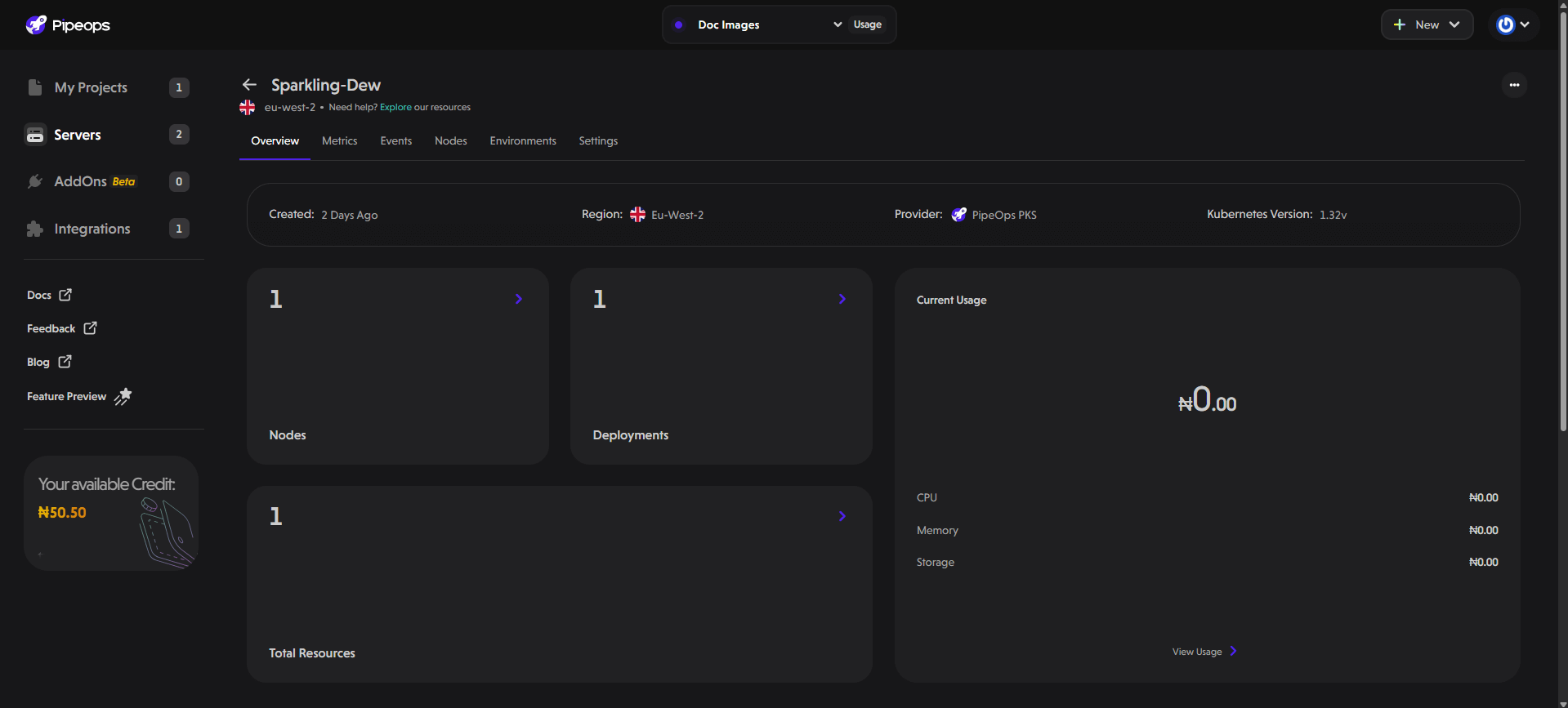Server Overview
Here, we’ll talk about the Server Overview feature on PipeOps. This dashboard provides a snapshot of your server’s essential details and associated resources.
The Overview tab is the default landing page when you select a server. Some details may vary depending on whether you created your server using PipeOps or a cloud provider.
On this page, you will see your server's name and a banner containing the following information:
- Created: The date and time your server was created.
- Region: The location where your server is currently deployed.
- Provider: The cloud provider on which your server is hosted.
- Kubernetes Version: The current Kubernetes version running on your server.

Additionally, you will find cards displaying the following server-related information:
- Nodes: The number of active nodes currently running on your server.
- Deployments: The total number of deployments on your server, including both projects and add-ons.
- Total Resources: Get a summary of your server’s capacity and utilization here. Stay informed about the number of unused environments, active subscriptions, team members, your current plan, and available credits.
- Current Usage: This field provides a cost breakdown of your infrastructure usage powered by OpenCost.
- Grafana Labs: This metric is available to users who have installed the Grafana add-on. You can open the Grafana dashboard and monitor your server in real time.

From the overview page, you will also see a navigation menu to other sections related to your server.
-
If you created a server on PipeOps, your navigation menu will include:
- Overview tab
- Metrics tab
- Events tab
- Nodes tab
- Environments tab
- Settings tab

- If you deployed a server using a cloud provider, your navigation menu will include everything from the PipeOps server, plus:
- Add-ons tab
- Dashboard/Prometheus tab
- Pricing tab
- Update History tab

You can also view real-time server events with a Severity filter to display specific event types. Events are displayed in a table with the following columns:
- Severity: Filters events by severity level (Normal, Warning, and Error).
- Time: Displays the timestamp of when the event occurred.
- Summary: Provides a brief summary of the incident details.
Conclusion
This page serves as a central hub for managing and monitoring your server, providing all the essential information at a glance. Use the tab navigation menu to explore additional aspects of your server.